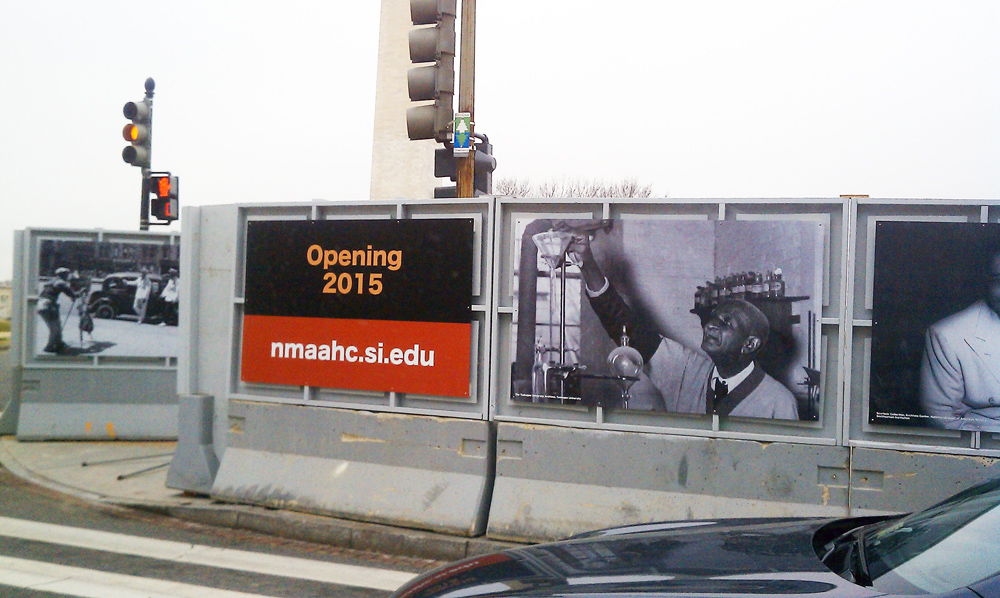Toward a blacker architecture in America

Who’s the best African-American architect in the United States?
I’ll forgive your hesitation. You may not know Halevy Simmons, who designed the Adam’s Mark hotel in St. Louis. He died last week at the age of 83, raising new discussions about the formidable barriers faced in establishing his career and his practice.

As for living talents, look to another hotel: the new Hilton Columbus Downtown, which opened in Ohio recently. It’s an important new signature for the city, designed by Curtis Moody, principal of Moody Nolan -- the nation’s largest African-American-owned architectural firm -- and a memorable modern composition of brick and glass. It offers a glimmer of a bigger future for black American architecture.
Black architects have gotten lots of press for the failures of the profession. About 1.7 percent of male architects are of African descent; 0.3 percent are women of color, according to the University of Cincinnati’s Directory of African American Architects. That’s a tiny sliver of 90,000-plus U.S. architects.
Local talents, left out?
So it seemed to make sense to include minority-owned architecture firms in the mix for a major project like Columbia University’s huge campus expansion in New York City. Yet in recent weeks, the university’s leaders have been criticized for “flying in architects down from Europe to work on the project when there were equally qualified Harlem architects right down the street,” says architect Zevilla Jackson Preston, a member of Arch527, a group of Harlem-based black architects.
Good news instead comes from Chicago, where this week the City Colleges of Chicago announced that Moody Nolan will design the new, $251 million Malcolm X College campus. At 500,000 square feet, this new magnet for health science studies kicks off a five-year capital plan that advances education as well as the portfolio of black design.
Curtis Moody speaks eloquently about urban issues, which have long informed his practice, the 85th largest in the United States. “As the suburban peripheries of our cities continue to grow during difficult economic times, our urban cores also continue to slowly die out,” he said. “Our cities lack clear identity, a sense of place and our current growth patterns are not sustainable. We are desperate to find ways to bring people back into our urban cores.”
While this is not a uniquely African-American theme in architecture and urban design, it is one that is passionately pursued by leading black architects.
Leading lights
Architect Philip Freelon, who runs his vibrant, eponymous practice in Research Triangle Park, N.C., is among the strongest U.S. voices today. An advocate for design excellence in public places to be “experienced by everyday people,” he is the leader of a team designing the Smithsonian Institute’s National Museum of African-American History and Culture in Washington, D.C., a much-delayed project.
“The African-American story is the quintessential American story, even though it was about a forced migration,” he told the Washington Post recently. “America is about opportunity for people from other places. You’ll find the best and worst of what the American story is in the African-American story.”
Freelon will likely discuss these themes and the upcoming museum when he delivers North Carolina State University’s commencement address next month.
On Freelon’s team is David Adjaye, a critically acclaimed Tanzanian-born British architect with a very high international profile. In the U.S., Adjaye is behind the Museum of Contemporary Art in Denver, and he’s often seen on the campuses of Harvard, Princeton and the University of Pennsylvania.
Why isn’t there a U.S. equivalent of Adjaye among our ranks?
The closest we’ve come to our own Adjaye might have been Paul Revere Williams of Los Angeles, among the best American architects ever. Williams, who died in 1980, designed that awesome, futuristic Theme Building you’ve seen at LAX, as well as homes for Frank Sinatra and Lucille Ball.
Best-ever Hollywood architect
Through the 1920s and 1930s, Williams built a Depression-proof practice by building glamorous homes for glamorous clients in the elite hillside subdivisions like Bel Air, Brentwood, and Beverly Hills. The entertainment industry recognized both his blackness and his design talent. A memorable and dynamic personality, Williams was the first “Architect to the Hollywood Stars.”
So to answer the question: The best African-American architect in the United States may well be a legacy like Williams. Or a Brit like Adjaye. But we’d do better to elevate leading thinkers like Freelon or Moody and hundreds of emerging talents in Harlem and elsewhere. The profession -- and our cities and buildings -- will be so much the better for it.
This post was originally published on Smartplanet.com